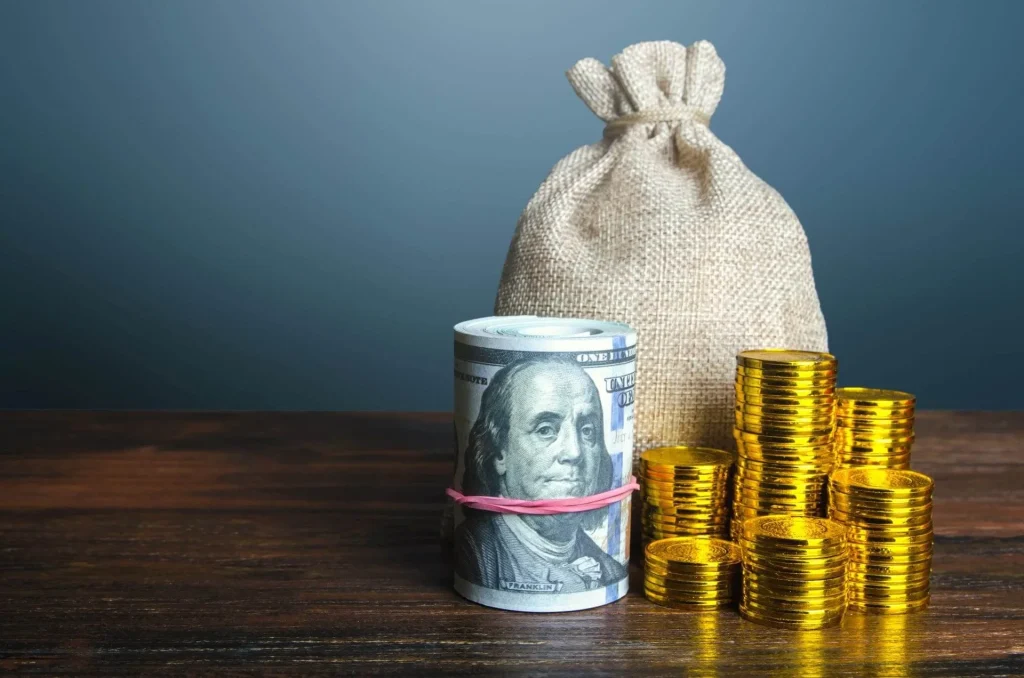Real estate, particularly premium houses and lots has long been seen as a reliable and possibly profitable investment choice that provides a buffer against market volatility. Investors have become cautious recently due to worries about economic uncertainty and probable interest rate increases.
What is the US Interest Rate Hike?
In the United States, an increase in the federal funds rate the interest rate at which depository institutions (including banks and credit unions) lend reserve balances to other depository institutions overnight is referred to as an increase in interest rates. This rate is determined by and under the jurisdiction of the Federal Reserve, the nation’s central bank.
The Federal Reserve decides to raise interest rates when it wants to increase the cost of borrowing money. To affect the broader economy and accomplish a number of economic goals, this policy tool is used.
Controlling inflation
Interest rate increases by the Federal Reserve are one of the main weapons used by monetary policy practitioners in the United States to control inflation. The Federal Reserve may increase interest rates in order to slow down economic activity and ease inflationary pressures when the economy experiences high inflation.
Understanding Inflation
When the average price level of products and services in the economy grows over time, inflation takes place. The purchasing power of the currency is reduced by high or rapid inflation, raising the cost of goods and services for consumers. The Federal Reserve, also known as the Fed, is the country’s central bank. Its dual duty is to support maximum sustainable employment while preserving stable prices. The portion of this obligation relating to stable prices includes controlling inflation.
The US central bank may increase short-term interest rates to fight inflation. The federal funds rate is the most used tool for this purpose. The cost of borrowing money increases for banks when the Fed raises this rate, and this rise in borrowing costs can be passed on to customers and businesses. Investment decisions may also be impacted by higher interest rates. When interest rates are higher, businesses would cut back on capital expenditures and individuals might put off major purchases like homes and cars, which would limit the economy’s expansion even further. Investment decisions may also be impacted by higher interest rates. When interest rates are higher, businesses would cut back on capital expenditures and individuals might put off major purchases like homes and cars, which would limit the economy’s expansion even further.

Keeping the Financial System Stable
Asset bubbles have a chance of forming during extended periods of low-interest rates. This means that the prices of some assets, such as real estate or stocks, may increase significantly due to the easy and affordable access to credit. These bubbles have the potential to cause financial instability when they pop. Raising interest rates can reduce speculative excesses and help stop asset bubbles from forming. By enabling banks to charge higher interest rates on loans while maintaining relatively low interest payments on deposits, higher interest rates can increase their profitability. For there to be financial stability, the banking industry must be strong.
Exchange rates may be impacted by interest rate differences between nations. When the United States increases interest rates in comparison to other nations, it can draw in foreign investment and make the dollar stronger. This can support the stability of the world financial system and the foreign exchange market.
Stabilizing the Currency
Increasing interest rates frequently has unintended or indirect effects on the currency, such as strengthening the U.S. dollar. The value of assets denominated in the national currency increases as interest rates rise. Increased demand for assets with higher yields, like government bonds, may result from rising interest rates. Foreign investors must purchase the local currency in order to purchase these assets, which raises demand for the currency and generally causes it to strengthen.
Downsides of interest rate hike
1. Increased Borrowing Costs
An interest rate increase has a number of immediate and direct negative effects, with increased borrowing costs being one of them for both consumers and businesses. As a result, borrowing money, paying off debt, and using credit cards may become more costly, which may have a negative impact on customer purchases and company investments.
2. Reduced Growth in the Economy
As a result of making it more expensive for businesses to finance their operations and investments, higher interest rates can slow down economic growth. It may also result in less consumer spending, a major engine of economic expansion.
3. Stock market volatility
As markets react to rising interest rates, there may be more turbulence and uncertainty, which can make it challenging for investors and financial companies to make projections for the future.

The Durability of Real Estate
Real estate’s inherent resilience is one of the main reasons it continues to be a desirable investment, even in tumultuous times. When compared to stocks or other investments, real estate is a relatively low-risk choice because it frequently increases in value over time. Over the long term, property values typically rise, albeit with some fluctuations. As a result, through rental yields and potential capital growth, it can offer a source of steady income. When attempting to obtain permits for brand-new construction or development, real estate developers and investors might run into opposition from local governments or regulatory bodies. Zoning limitations, environmental issues, or opposition from local communities are some examples of this resistance.
Diversification and Risk Mitigation
For investors, diversification becomes essential during uncertain economic times. Your investment portfolio can be diversified by adding real estate. Real estate frequently follows its own set of dynamics, as opposed to stocks and bonds, which macroeconomic factors can significantly impact. Your overall investment portfolio may be less affected by economic downturns and risk due to this independence.
Risk mitigation
- Selecting carefully assets with various risk profiles is one way to lower risk. For instance, while some assets, like stocks, may be more volatile than others, some, like government bonds, may be inherently less risky. You can lower the overall risk by utilizing a variety of asset classes.
- Use risk management techniques to safeguard your investments, such as placing stop-loss orders, diversifying your holdings, and using hedging instruments like options or futures.
- Invest your money in a variety of asset classes, such as stocks, bonds, real estate, and commodities, depending on your risk appetite, financial objectives, and time horizon.
Diversification
- Spreading your investments among various asset classes is known as diversification, and it can help to lessen the impact of an underperforming asset. For instance, if you own a mix of stocks, bonds, and real estate, a decline in one of those asset classes might be offset by an increase in a different one.
- To lessen risks associated with particular nations, invest in assets from various geographic areas. International diversification can offer protection from the political and economic turbulence that can exist within one nation.
- To reduce sector-specific risks, diversify among different economic sectors within asset classes like stocks (such as technology, healthcare, and energy). Other sectors might perform better if one sector struggles.
Rental Property Cash Flow
Even in challenging times for the economy, owning rental properties can provide a reliable source of income. People will always need a place to live, and renting out a space to tenants can bring in monthly money. Rental income can frequently be used to pay off the mortgage and provide extra cash flow. Rental income is a valuable source of income in uncertain economic times because it can be adjusted to keep up with inflation.
Investors frequently examine cash flow to assess a property’s financial stability and suitability for their investment objectives. Because it can offer a reliable income stream and boost a property’s long-term value, positive cash flow is typically desired.
Bypass Inflation
Inflation is frequently threatened by economic uncertainty, which can reduce the value of conventional investments. On the other hand, historically speaking, real estate has been a good inflation hedge. Real estate investors can keep up with or even outpace inflation by taking advantage of rising property values and rental rates that follow an increase in the cost of living. In the past, precious metals like gold and silver have been widely used as inflation hedges. During periods of inflation, they are desirable assets because of their inherent value and scarcity.
American government bonds known as TIPS are made specifically to guard against inflation. In response to changes in the Consumer Price Index (CPI), they modify the bond’s principal value. A strategy to guard against your own currency depreciating due to inflation is to diversify into foreign currencies, especially those of nations with stable economic conditions.

Real Estate Investing in an Uncertain Economy
Even in economic uncertainty, real estate investing can be a wise choice, but it necessitates careful thought and a well-thought-out plan. It can be difficult and rewarding to invest in real estate during a period of economic uncertainty. Although there are risks associated with economic uncertainty, there are also opportunities for astute investors.
Diversify Your Investments
Investment diversification is a key tactic for risk management and may enhance overall returns in your investment portfolio. To lessen the effect of a subpar investment on your entire portfolio, it entails distributing your investments across various asset classes, industries, and geographical areas.
A key tactic for reducing risk is diversification. Don’t invest all of your funds in a single building or market. Various real estate types, including residential, commercial, industrial, and even real estate investment trusts (REITs), should be considered.
In order to spread your investments across a variety of asset classes and investments, you can reduce risk and possibly increase returns by diversifying your investment portfolio. Since different asset classes typically behave differently in a range of economic conditions, diversification can help you strike a balance between risk and reward.
Effects of Increasing Interest Rates
The effects of rising interest rates can have a significant impact on the economy, financial markets, and the financial situations of individual people. Borrowing money becomes more expensive as interest rates rise. Both individuals and businesses are impacted by this. It may result in higher interest rates on personal loans, credit cards, and mortgages for particular people. It may increase the cost of financing for growth or ongoing operations for businesses.
Mortgage rates typically rise as interest rates do. This may make homes less accessible, which could slow the housing market. Mortgage approval for prospective buyers could be more difficult, and existing homeowners with adjustable-rate mortgages might see their payments go up each month. The value of financial assets may be impacted by rising interest rates. When interest rates increase, bond prices typically decline because new bonds with higher coupon rates become more alluring and devalue existing bonds with lower rates. Bond investors may suffer losses as a result of this. In contrast, higher interest rates may increase a person’s desire for savings accounts, certificates of deposit, and other fixed-income investments.
A nation’s currency may become more appealing to investors seeking greater returns on their investments as interest rates rise. This might cause the currency to appreciate, which might have an impact on global trade. A country’s exports may cost more to foreign buyers while its imports may cost less to domestic consumers if its currency is stronger. A variety of aspects of the economy and financial markets are impacted by the complex and multifaceted effects of rising interest rates. The precise effects can change depending on the size and rate of interest rate increases as well as the overall state of the economy at the time.
Advice for Investing in Real Estate When Rates Are Increasing
1. Know How Rising Rates Affect You
Financing may become more expensive at higher interest rates, which may reduce buyers’ purchasing power and make obtaining loans more difficult. The general state of the economy may be impacted by rising rates, which could have an impact on rental demand and property values.
2. Consider Your Financing Options
Find the best mortgage rates and terms by comparing offers. If you intend to keep the home for a long time, look into fixed-rate mortgages to lock in lower rates. To possibly lessen the effects of rising rates, look into alternative financing options like seller financing or private lenders.
3. Check the cash flow of a property
Analyze your investments’ potential for cash flow with care. Make sure your properties generate positive cash flow because higher interest rates can strain cash flow. Be cautious when making financial projections and take potential interest rate increases into account.
Think about how your investments would fare in an environment with higher interest rates. By stress-testing your portfolio, you can find potential weak points and make the necessary corrections. Even though increasing interest rates can be problematic, they can also offer opportunities to astute investors who are willing to adjust to shifting market dynamics.
Read more: Positive Outlook: PH Real Estate Thriving Amid Uncertainty


